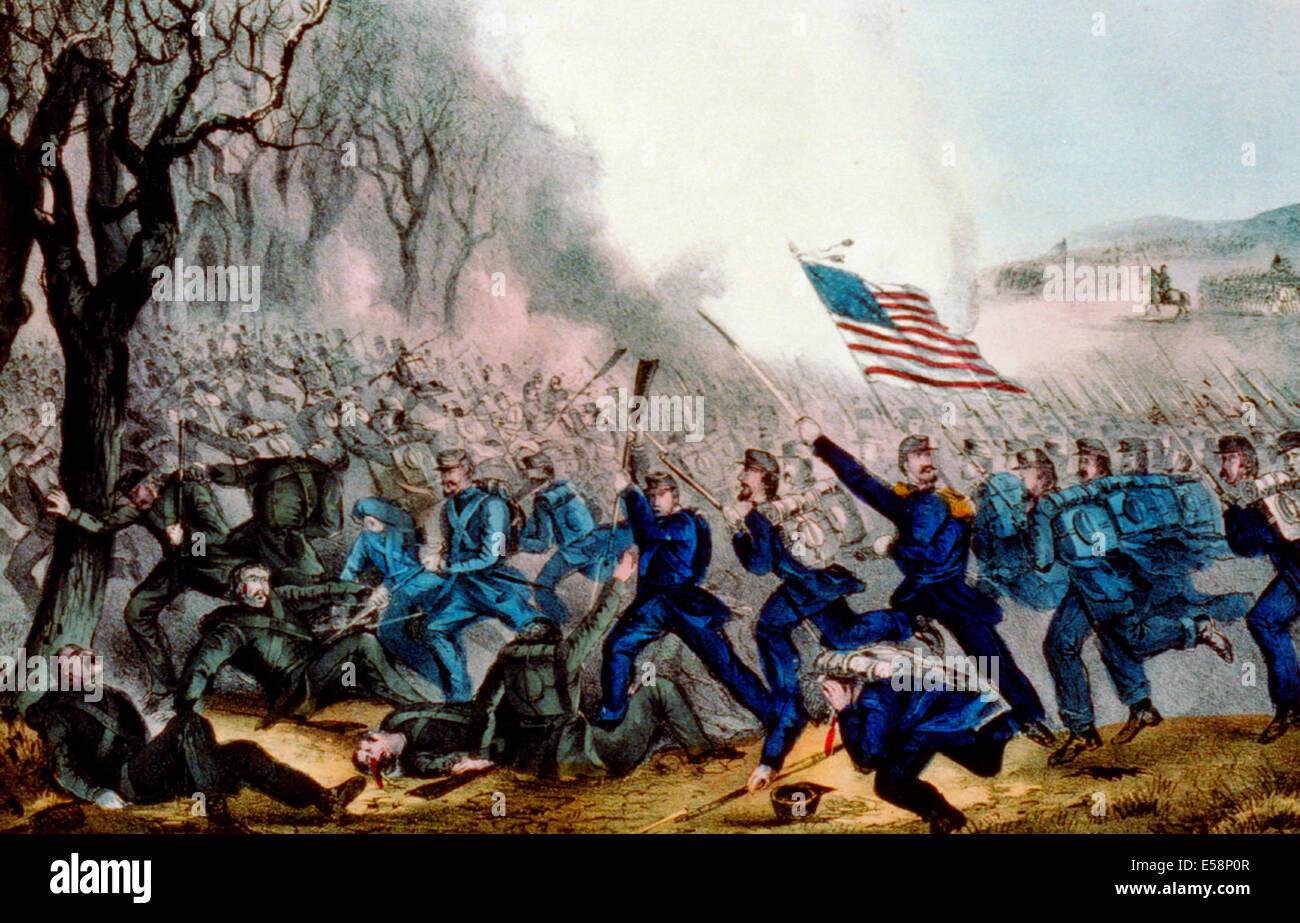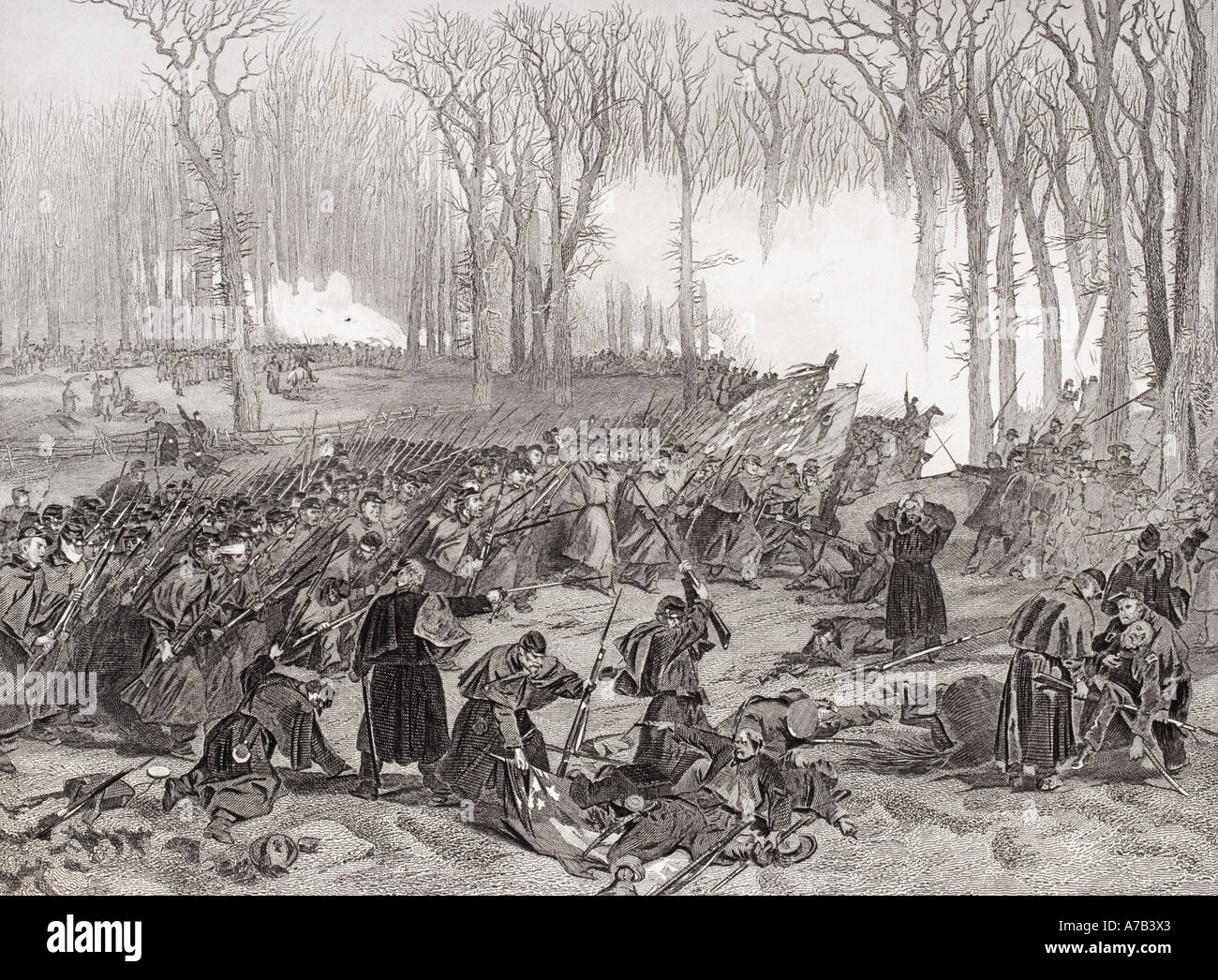
The Unseen Hand of Mill Springs: How an Early Civil War Victory in Kentucky Shaped the Western Theater
While the thunderous cannonades of Gettysburg and the grinding siege of Vicksburg often dominate the narratives of the American Civil War, casting long shadows over other crucial engagements, some battles, though smaller in scale, wielded disproportionately massive influence. One such pivotal, yet frequently overlooked, encounter unfolded on a cold, fog-shrouded morning in January 1862, along the banks of Fishing Creek in south-central Kentucky. The Battle of Mill Springs, or Logan’s Crossroads as it was also known, was not just a Union victory; it was a foundational triumph that secured Kentucky for the Union, shattered Confederate hopes in the crucial Western Theater, and forged the early reputation of a general who would become known as "The Rock of Chickamauga."
Kentucky, a border state, was a geopolitical prize fiercely contested by both North and South. Its strategic location, control of major rivers like the Ohio and Cumberland, and its significant agricultural resources made it indispensable. President Abraham Lincoln famously declared, "I hope to have God on my side, but I must have Kentucky." Initially attempting neutrality, the state was quickly pulled into the conflict when Confederate forces, under the command of Maj. Gen. Leonidas Polk, occupied Columbus in September 1861. This act, a violation of Kentucky’s declared neutrality, provided the Union with the justification to also occupy positions within the state.
Among the Confederate commanders pushing into Kentucky was Brigadier General Felix Zollicoffer, a newspaper editor and former Congressman from Tennessee. A man of considerable personal bravery but limited military experience, Zollicoffer had established a defensive position at Mill Springs (also known as Beech Grove) on the south side of the Cumberland River, near present-day Nancy, Kentucky. His intent was to block Union advances and secure a crucial supply route. However, his choice of location was strategically precarious; the Cumberland River was prone to swelling, and without sufficient boats, it could easily become a trap, cutting off his forces from reinforcements or retreat.

Opposing Zollicoffer was Brigadier General George H. Thomas, a Virginian who, unlike many of his Southern-born peers, remained loyal to the Union. Thomas was known for his methodical approach, his stern demeanor, and an unwavering resolve that would define his career. He was advancing with his division from Lebanon, Kentucky, with the objective of dislodging Zollicoffer and driving Confederate forces out of the state.
By mid-January 1862, the stage was set for a clash. Zollicoffer, with approximately 5,000 men, found his forces increasingly isolated at Beech Grove. Across the swollen river, reinforcements under Maj. Gen. George B. Crittenden, a West Point graduate who had resigned from the U.S. Army to join the Confederacy, were struggling to cross and link up. Meanwhile, Thomas’s Union force, numbering around 4,000, was encamped at Logan’s Crossroads, a few miles north. The weather was miserable – cold, damp, and prone to sudden, dense fogs that could disorient even seasoned soldiers.
Crittenden, having finally joined Zollicoffer, but finding their position vulnerable, decided on a bold, pre-emptive strike. He reasoned that a surprise attack on Thomas’s forces at Logan’s Crossroads, before the Union troops could consolidate, offered their best chance. On the night of January 18th, Confederate forces, consisting primarily of Tennessee and Alabama regiments, began their march through a driving rain. The roads quickly turned to mud, and the darkness, combined with a thick, clinging fog that descended before dawn, made the advance slow and arduous.
As dawn broke on January 19th, the Confederate vanguard stumbled upon Union pickets. The element of surprise was partially achieved, but the dense fog quickly turned the battlefield into a confusing maelstrom. Visibility was minimal, often less than 50 yards, and the rain had soaked uniforms, making it difficult to distinguish friend from foe.
It was in this chaotic environment that General Zollicoffer made a fatal error. Dressed in a white rubber raincoat, which made him stand out, he rode forward through the fog, believing he was approaching a portion of his own lines. Instead, he rode directly into the ranks of the 4th Kentucky Infantry (Union), commanded by Colonel Speed S. Fry. In the swirling mist, there was a moment of utter confusion. Zollicoffer, mistaking Fry’s regiment for his own, reportedly called out, "We are friends!" Colonel Fry, initially also uncertain, quickly realized his mistake. The exchange was brief and deadly. Zollicoffer, reaching for his pistol, was shot dead by Fry’s men, falling from his horse.
The death of their beloved general sent a shockwave through the Confederate ranks. "The loss of General Zollicoffer was a terrible blow," wrote one Confederate soldier in a letter home. "It felt like the heart had been torn out of us." Compounding the disarray, the 15th Mississippi Infantry, dressed in new, uncolored "butternut" uniforms that resembled the undyed wool worn by some Union regiments, came under friendly fire from other Confederate units who mistook them for the enemy. The fog and the lack of standardized uniforms created a deadly confusion that further eroded Confederate morale and cohesion.
Meanwhile, General Thomas, cool and collected as always, began to deploy his forces with precision. He ordered his regiments, including the 9th Ohio and the 2nd Minnesota, to form a strong defensive line. The Union soldiers, many of whom were Germans from Ohio, stood firm, delivering volleys of devastating fire. The 9th Ohio, a regiment renowned for its drill and discipline, executed a textbook bayonet charge, breaking the Confederate line and driving them back.
"Thomas was everywhere, calm and steady," one Union officer recalled. "He inspired confidence in every man." It was at Mill Springs that Thomas truly began to earn the reputation for unflappability and tactical acumen that would later see him dubbed "The Rock of Chickamauga." Under his leadership, the Union forces not only repelled the Confederate assault but launched a vigorous counterattack, driving the Confederates in a full-scale rout back towards Beech Grove.

The retreat was desperate and chaotic. Confederate soldiers, many demoralized and exhausted, fled towards the Cumberland River, hoping to cross to safety. They abandoned their artillery, wagons, and supplies. Crittenden, unable to rally his broken forces, ordered the remaining boats to ferry his men across, but many were left behind, forced to surrender or attempt to swim the icy waters. The Union forces captured 12 artillery pieces, more than 150 wagons, over 1,000 horses and mules, and a significant quantity of small arms and camp equipment – a staggering haul that underscored the completeness of the Confederate collapse.
The casualties reflected the decisive Union victory: the Confederates suffered approximately 125 killed, 309 wounded, and 99 captured or missing. The Union, by contrast, reported 40 killed and 207 wounded.
The immediate aftermath of Mill Springs sent shockwaves through both the Union and Confederate high commands. For the Confederacy, it was a humiliating defeat, the first major Union victory in the Western Theater. It exposed the weaknesses of inexperienced commanders and the vulnerability of their positions in Kentucky. Zollicoffer’s death was a blow to morale and a significant loss for Tennessee.
For the Union, the victory was an immense morale booster. It secured eastern Kentucky firmly within Union control and shattered Confederate General Albert Sidney Johnston’s defensive line in the state. More importantly, it opened the door for further Union advances into Tennessee. Just weeks later, this momentum would be capitalized upon by Brigadier General Ulysses S. Grant at Fort Henry and Fort Donelson, a pair of victories that would truly crack the Confederate hold on the West and elevate Grant to national prominence. Mill Springs, therefore, was a crucial precursor, the first domino to fall that set in motion a series of events leading to major Union gains.
In the grand tapestry of the Civil War, Mill Springs often recedes into the background, overshadowed by larger, more famous engagements. Yet, its significance cannot be overstated. It was a battle where a fledgling Union army, under a steady commander, proved its mettle. It was where Confederate hopes for Kentucky were decisively dashed. It demonstrated the strategic importance of the Western Theater and foreshadowed the relentless Union pressure that would ultimately cut the Confederacy in two.
Today, the Mill Springs Battlefield Association and the National Park Service work diligently to preserve and interpret the battlefield. Visitors can walk the hallowed grounds where Zollicoffer fell, explore the Confederate earthworks at Beech Grove, and learn about the courageous soldiers who fought on that cold January day. Monuments stand as silent witnesses, and a museum tells the story of the battle, ensuring that this pivotal moment in American history is not truly forgotten.
The Battle of Mill Springs serves as a powerful reminder that history is often shaped not just by the grand, sweeping narratives, but by the critical, early engagements that, like unseen hands, guide the course of events. It was here, in a muddy field in Kentucky, that the Union’s Western campaign truly began to gather its unstoppable momentum, forever altering the trajectory of the Civil War.


